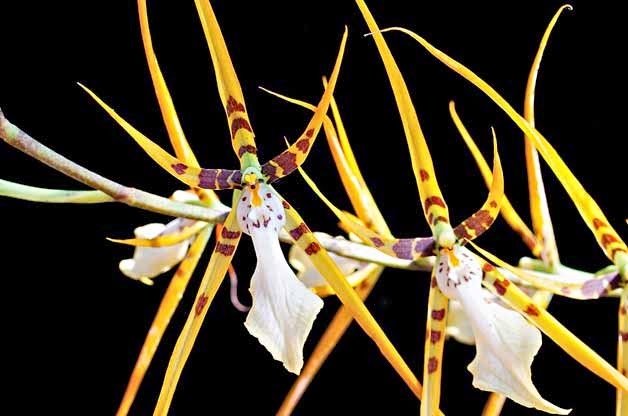Ants and Termites
Ants and termites live in vast social colonies made up of thousands of individual insects, each with a role to play in their underground cities. A fertilized queen starts the colony, building a single chamber for her nest. Her first brood are workers who build and maintain the nest, which in ants is made up of vertical tunnels for movement and horizontal chambers for storage, according to ant biologist Walter Tschinkel of Florida State University. A queen can lay hundreds of eggs every day throughout her lifespan -- between 10 and 20 years -- at which point the colony dies along with her.
Collembola
Collembola, commonly known as springtails, are another species of insect found in abundance underground. Called springtails for the forked appendage that allows them to jump up into the air, these insects are typically only a few millimeters long and can number more than 100 individuals in one square centimeter of soil under the right conditions. With such high densities common among collembola, these insects are important links in the ecosystem, recycling nutrients and breaking down organic matter in the soil.
Beetles
Some insect species, including many species of beetles, spend only part of their life cycle underground as larvae. They are also abundant, with Carabidae, or ground beetles, numbering more than 2,000 species in North America. After hatching, these beetles live between two and six years underground as larval grubs, feeding on other insects, the roots of grasses and other plants. They complete their life cycle by pupating and hatching out into their winged adult stage, during which they will find a mate.
Locusts
Locusts, also called cicadas, are less common than ants and beetles, but their life cycles have been studied by humans for hundreds of years. Depending on the species, cicadas spend the first two to 17 years of their lives underground as larvae, feeding on the sap of plant roots. They hatch en masse as winged adults, in swarms of millions, only when ground temperatures reach 64 degrees Fahrenheit (18 degrees Celsius). After a brief and frenzied mating period of only a few days, the cicadas lay their eggs and die, beginning the cycle again.





.jpg)



.jpg)






.jpg)


















.png)











.jpg)